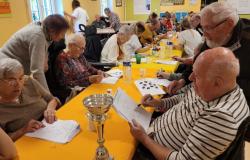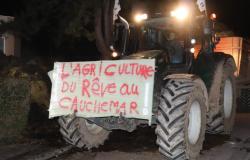the essential
Feeding the birds in winter is not essential but can help them and above all allows them to be observed. Advice from the LPO du Lot so that this help benefits them.
The first frosts are coming. And we bring out the bird feeders. But is it really useful? Nathan Trourie, nature and biodiversity study manager at the League for the Protection of Lot Birds, responds.
“The LPO’s position is that we can feed the birds only in winter,” he begins, that is to say from the end of November to the end of March. Most species could manage on their own but, the naturalist is aware, it is “above all a way to enjoy the beauties of nature”. And then it can give birds a boost when night frosts “prevent them from finding food and they need calories to warm up”.
DDM – MICHEL LABONNE
Because, although it is mild in the Lot and despite global warming, some winters can be more rigorous or offer icy episodes. “We can do regular feeding but slow down if there is a mild spell,” advises Nathan Trourie, “and at the end of the season, we must stop slowly. For example, we give seeds every day but reduce the quantity.”
-
Why not feed all year round
“Since it’s a pleasure, some people do it all year round,” notes the LPO employee, “but that poses several problems.” First, birds lose the habit of foraging. Then, a gathering attracts predators. Third problem: diseases, if there is a concentration of birds. “European greenfinches can catch a pathogen that prevents them from feeding. The recommendation is to clean the feeder regularly, with white vinegar for example,” observes Nathan Trourie. And to prevent the food from staying there for too long. “And if we find birds in poor condition, we must stop feeding for a month and clean them well,” he adds. Last problem of a year-round feeder: nutritional imbalance. Because birds feed their young with insects. By inviting them to only eat seeds, we risk creating a deficit in the baby birds.
-
Seeds and fruits
The LPO also calls for monitoring food quality. Say goodbye to cooked, salty, sweet, processed foods and crumbs. Of course, bread is cereal, recognizes Nathan Trourie, “but there is also salt”. The best foods? Sunflower seeds, millet, cracked corn, suitable seed mixtures, but also peanuts, walnuts and fresh hazelnuts, oat flakes, seasonal fruits, and finally fat balls without palm oil and without net to prevent birds from getting their feet caught in it. But the best way to feed the birds, underlines the member of the LPO, is “natural feeding, by planting fruit and berry trees in your garden”. And by agreeing to share.
-
High feeders
“Feeders should be installed in open areas so that birds know if they are in danger,” advises Nathan Trourie, away from windows to avoid collisions and high up so that they can escape, whether on a mat or hung on a wall. The same goes for water points which can be installed all year round provided they are cleaned every week.
A selective feeder helps protect against pigeons. Finally, to avoid also feeding the rodents, two tips: sweep the floor regularly and install an inverted funnel on the base of the feeder, otherwise “the rats could also climb there”.
Counting garden birds
A bird feeder is often a gathering point for birds in winter: robins, tits, finches, goldfinches… However, on January 25 and 26, 2025, the next national garden bird counting weekend will be held. Anyone can sign up to count and identify, for one hour, the birds they see in their garden. It is an indicator used by the National Museum of Natural History.
Site : https://www.oiseauxdesjardins.fr/






